Filter by

Advances in Molecular Retrovirology
Retroviruses consist of a varied family of enveloped RNA viruses with positive-sense RNAs that replicate in a host cell through the process of reverse transcription. Retrovirus‐ es belong to the Retroviridae family that typically carries their genetic material in the form of ribonucleic acid, while the genetic material of their hosts is in the form of deoxy‐ ribonucleic acid
- Edition
- -
- ISBN/ISSN
- 9789535122616
- Collation
- 202
- Series Title
- -
- Call Number
- -
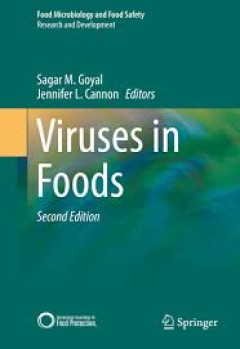
Viruses in Foods
Foodborne viruses are an important group of pathogens recognized to cause significant disease globally, in terms of both number of illnesses and severity of disease. Contamination of foods by enteric viruses, such as human norovirus and hepatitis A and E viruses, is a major concern to public health and food safety. Food Virology is a burgeoning field of emphasis for scientific research. Many de…
- Edition
- -
- ISBN/ISSN
- 978-3-319-30723-7
- Collation
- -
- Series Title
- -
- Call Number
- -
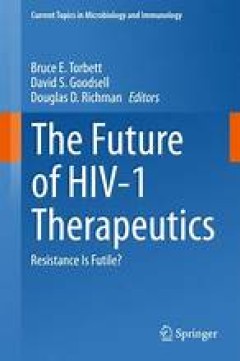
The Future of HIV-1 Therapeutics
This volume thoroughly covers HIV-1 antiretrovirals currently in clinical use, together with their advantages and limitations. HIV-1 inhibitor resistance is discussed in detail, and critical assessments as to what will be required of future antiretrovirals in order to halt viral replication, reduce viral resistance, and alter the state of viral latency are presented. Experts at the forefront of…
- Edition
- 1
- ISBN/ISSN
- 978-3-319-18518-7
- Collation
- X, 254
- Series Title
- Current Topics in Microbiology and Immunology
- Call Number
- -

Microbial Endocrinology: Interkingdom Signaling in Infectious Disease and Health
This new edition highlights the numerous advances made in the field of microbial endocrinology over the last five years. Prominent among these new topics featured is the emergence of the microbiota-gut-brain axis and the role it plays in brain function. Specific focus is given to the role of microbial endocrinology in the evolutionary symbiosis between man and microbe as it relates to both heal…
- Edition
- 1
- ISBN/ISSN
- 978-3-319-20214-3
- Collation
- XIII, 374
- Series Title
- Advances in Experimental Medicine and Biology
- Call Number
- -

Viruses in Foods
Foodborne viruses are an important group of pathogens recognized to cause significant disease globally, in terms of both number of illnesses and severity of disease. Contamination of foods by enteric viruses, such as human norovirus and hepatitis A and E viruses, is a major concern to public health and food safety. Food Virology is a burgeoning field of emphasis for scientific research. Many de…
- Edition
- -
- ISBN/ISSN
- 978-3-319-30723-7
- Collation
- XIII, 512
- Series Title
- -
- Call Number
- -
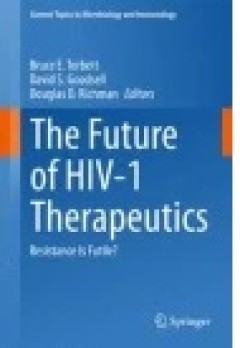
The Future of HIV-1 Therapeutics
This volume thoroughly covers HIV-1 antiretrovirals currently in clinical use, together with their advantages and limitations. HIV-1 inhibitor resistance is discussed in detail, and critical assessments as to what will be required of future antiretrovirals in order to halt viral replication, reduce viral resistance, and alter the state of viral latency are presented. Experts at the forefront of…
- Edition
- -
- ISBN/ISSN
- 978-3-319-18518-7
- Collation
- X, 254
- Series Title
- Current Topics in Microbiology and Immunology
- Call Number
- -
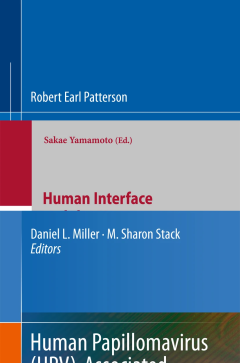
Human Papillomavirus (HPV)-Associated Oropharyngeal Cancer
Head and neck squamous cell carcinoma (HNSCC), the sixth most prevalent cancer worldwide, remains a very difficult disease to treat and cure despite intensive investigation into molecular etiologies and tumor progression pathways. Due to public health efforts encouraging smoking cessation, the overall incidence of HNSCC has decreased in recent years in many countries. In contrast, the incidenc…
- Edition
- -
- ISBN/ISSN
- 978-3-319-21099-5
- Collation
- VIII, 314
- Series Title
- -
- Call Number
- 616.9
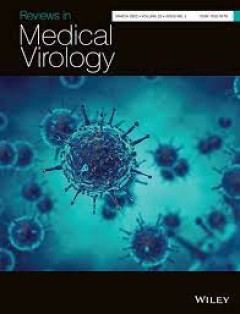
Notes on Medical Virology : What You Really Need To Know
Medical virology is always an interest to all healthcare disciplines, undergraduate and postgraduate students. These “Notes on Medical virology”, includes “what you really need to know”. The book comes in a new format, which places cases, keywords, facts and other considerations in colored tables and boxes only. As a result, extra spaces have been provided so that without expanding the…
- Edition
- -
- ISBN/ISSN
- -
- Collation
- -
- Series Title
- -
- Call Number
- 610 ALD n

HIV-1 Proteomics: From Discovery to Clinical Application
The development of proteomic analyses using advanced mass spectrometry techniques has revolutionized the way proteins are studied, namely, as individual molecules within a complex system. HIV-1 Proteomics: From Discovery to Clinical Application comprehensively covers protein analysis from the early classic experimental days to current state-of-the-art HIV-1 proteomics in a clear informative st…
- Edition
- -
- ISBN/ISSN
- 978-1-4939-6540-3
- Collation
- XI, 112
- Series Title
- -
- Call Number
- 576.6 HIV
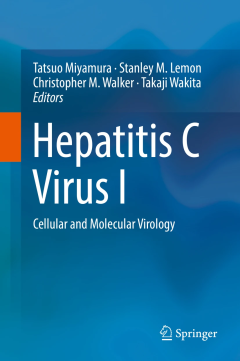
Hepatitis C Virus I: Cellular and Molecular Virology
This volume is composed of chapters that review important fundamental aspects of HCV biology and disease pathogenesis including, for example, the discovery and identification of the HCV genome, early virus-cell interactions including identification of various cellular receptors, HCV gene expression studied using the HCV replicon system, identification and characterization of HCV structural- and…
- Edition
- -
- ISBN/ISSN
- 978-4-431-56096-8
- Collation
- IX, 362
- Series Title
- -
- Call Number
- 579.2
 Computer Science, Information & General Works
Computer Science, Information & General Works  Philosophy & Psychology
Philosophy & Psychology  Religion
Religion  Social Sciences
Social Sciences  Language
Language  Pure Science
Pure Science  Applied Sciences
Applied Sciences  Art & Recreation
Art & Recreation  Literature
Literature  History & Geography
History & Geography